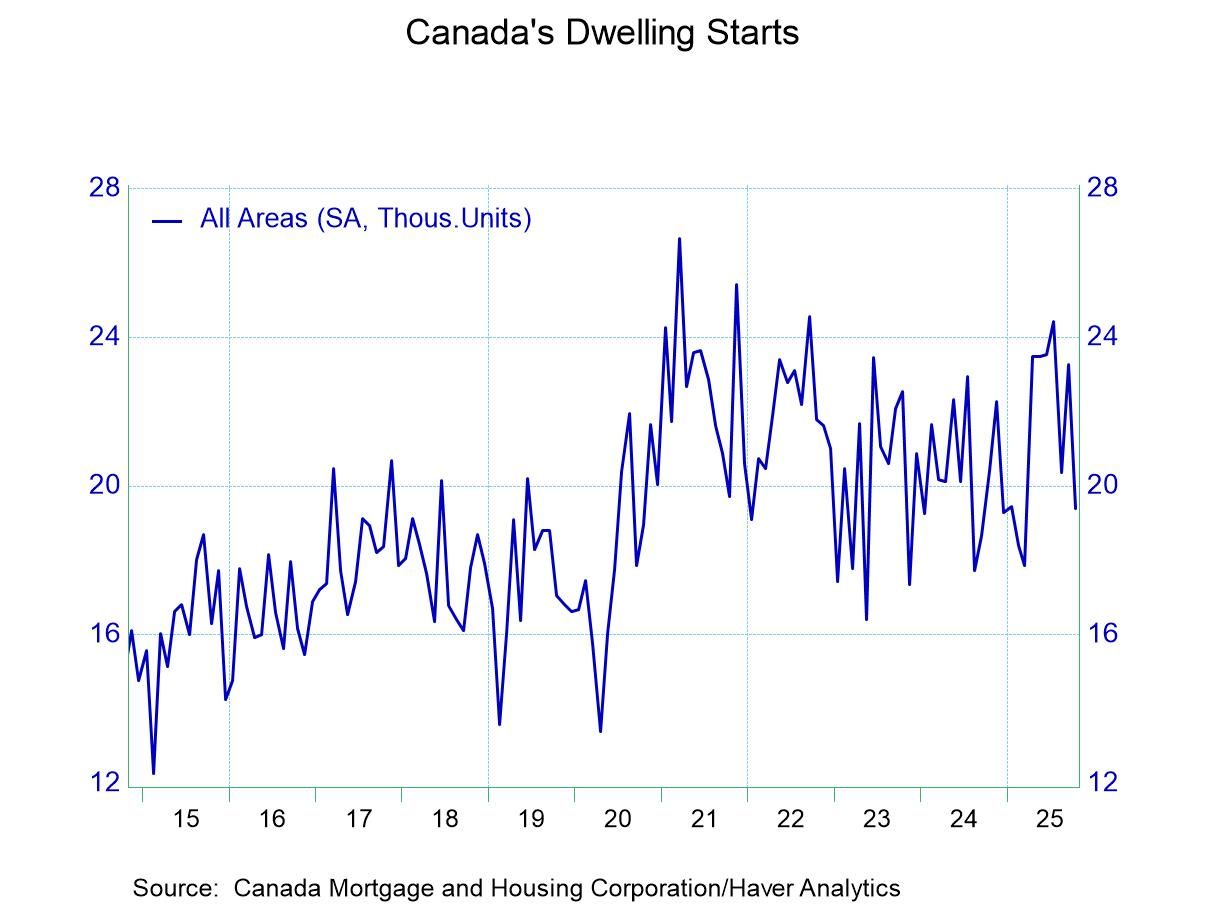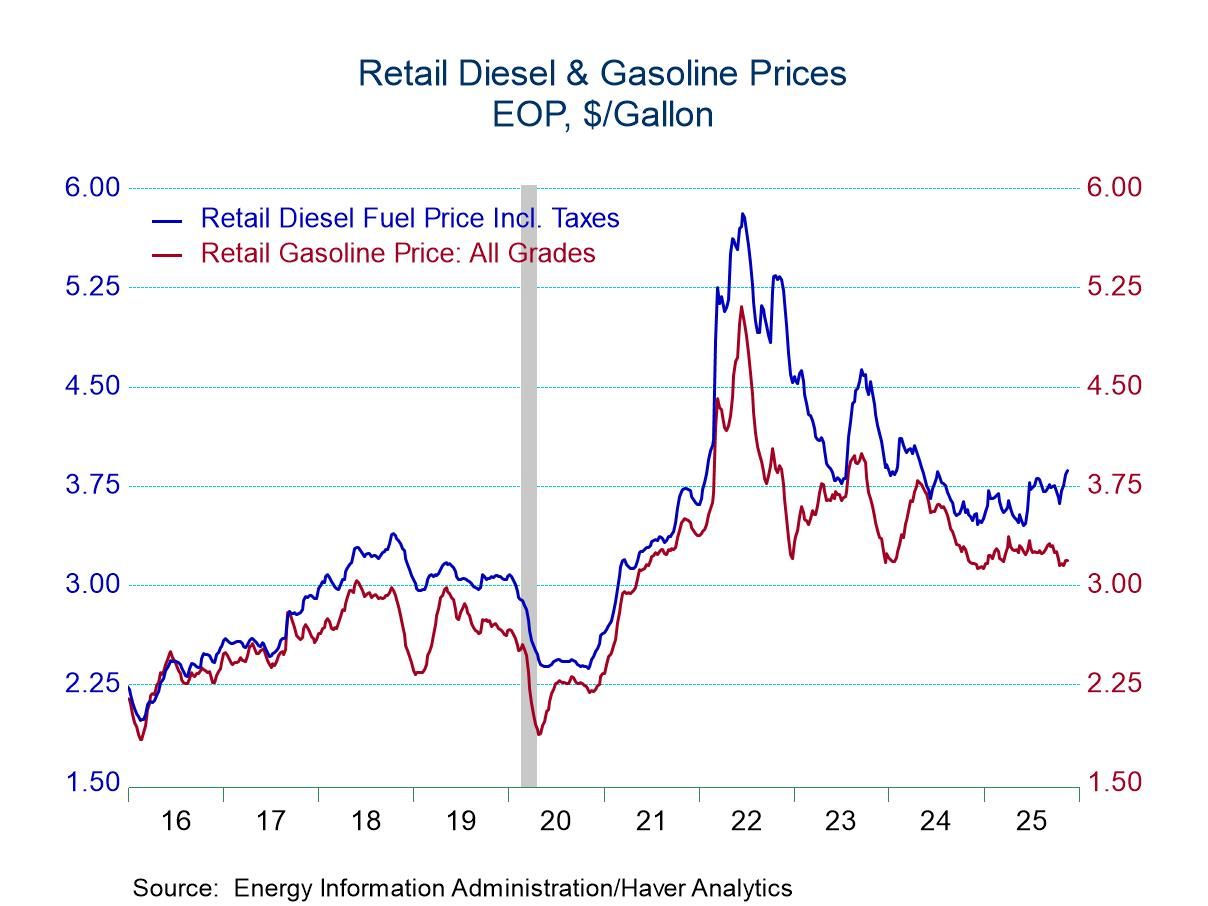U.S. Trade Deficit Narrowed in August
by:Sandy Batten
|in:Economy in Brief
Summary
- Release delayed by the more than one-month federal government shutdown.
- The trade deficit narrowed to $59.6 billion in August from $78.1 billion in July.
- Exports were little changed with a 4% jump in capital goods exports offset by declines in most other major categories.
- Imports fell 5.1% m/m, reflecting a $9 billion monthly decline in nonmonetary gold imports.
- The services surplus edged up in August.

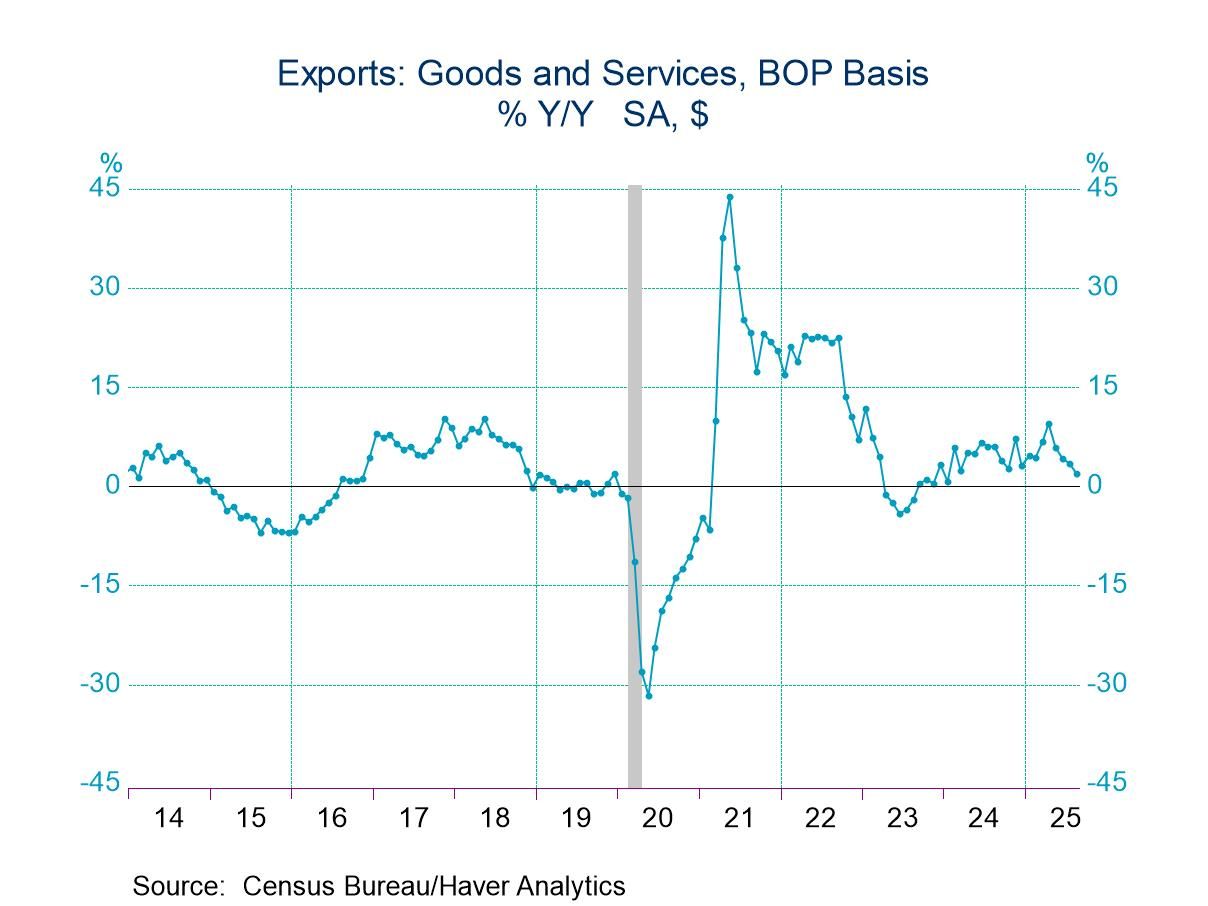
The U.S. trade deficit in goods and services (BOP basis) narrowed to $59.6 billion in August from a slightly downwardly revised $78.1 billion in July (previously $78.3 billion), according to the U.S. Census Bureau. The release had been delayed by the more than one-month long federal government shutdown. The Action Economics Forecast Survey expected a deficit of $60.5 billion. The goods deficit fell to $85.6 billion in August from $103.7 billion in July, while the services surplus widened to $26.1 billion from $25.6 billion in July. The real (inflation-adjusted) trade deficit narrowed to $83.6 billion (2017$) in August from $100.7 billion in July. Even with the July surge, the sharp narrowing of the real deficit in August puts the trade balance on course to be relatively neutral for Q3 real GDP growth after contributing nearly 5%-points in Q2.
Exports edged up 0.1% m/m (+1.9% y/y) in August following a 0.3% m/m increase in July. Goods exports fell 0.3% m/m while services exports rose a solid 0.8% m/m. For goods, capital goods exports excluding autos increased 4.0% m/m while exports of consumer goods excluding autos slumped 6.8% m/m. Exports of industrial supplies fell 1.0% m/m, their fourth consecutive monthly decline, and auto exports declined 3.0% m/m. For services, exports of maintenance and service repairs jumped 5.6% m/m, exports of government goods and services rose 3.6% m/m, and travel exports increased 1.8% m/m, their first monthly gain in four months.
Imports slumped 5.1% m/m (-1.9% y/y) in August, their fourth monthly decline in the past five months, after jumping 5.9% m/m in July. Both the July jump and the August fall were dominated by swings in imports of nonmonetary gold, which surged $9.6 billion in July and fell $9.3 billion in August. Goods imports fell 6.6% while service imports edged up 0.4% m/m. While the August decline in goods imports was largest in industrial supplies (-18.6% m/m), it was rather widespread across other major categories. Food imports slumped 8.6% m/m, capital goods ex auto imports declined 3.5% m/m, and consumer goods imports fell 6.3% m/m. For services, gains were small but widely spread. Construction service imports increased 2.2% m/m, travel was up 0.5% m/m.
The goods trade deficit with China widened to $15.4 billion in August from $14.7 billion in July. Exports to China slumped 14.0% m/m while imports from China slipped 3.0% m/m. The trade deficit with the European Union narrowed further to $8.1 billion in August from $8.6 billion in July. The deficit with Japan widened to $5.7 billion in August from $4.8 billion in July.
The international trade data can be found in Haver’s USECON database. Detailed figures on international trade are available in the USINT and USTRADE databases. The expectations figures are from the Action Economics Forecast Survey in AS1REPNA.
The minutes to the latest FOMC meeting can be found here.
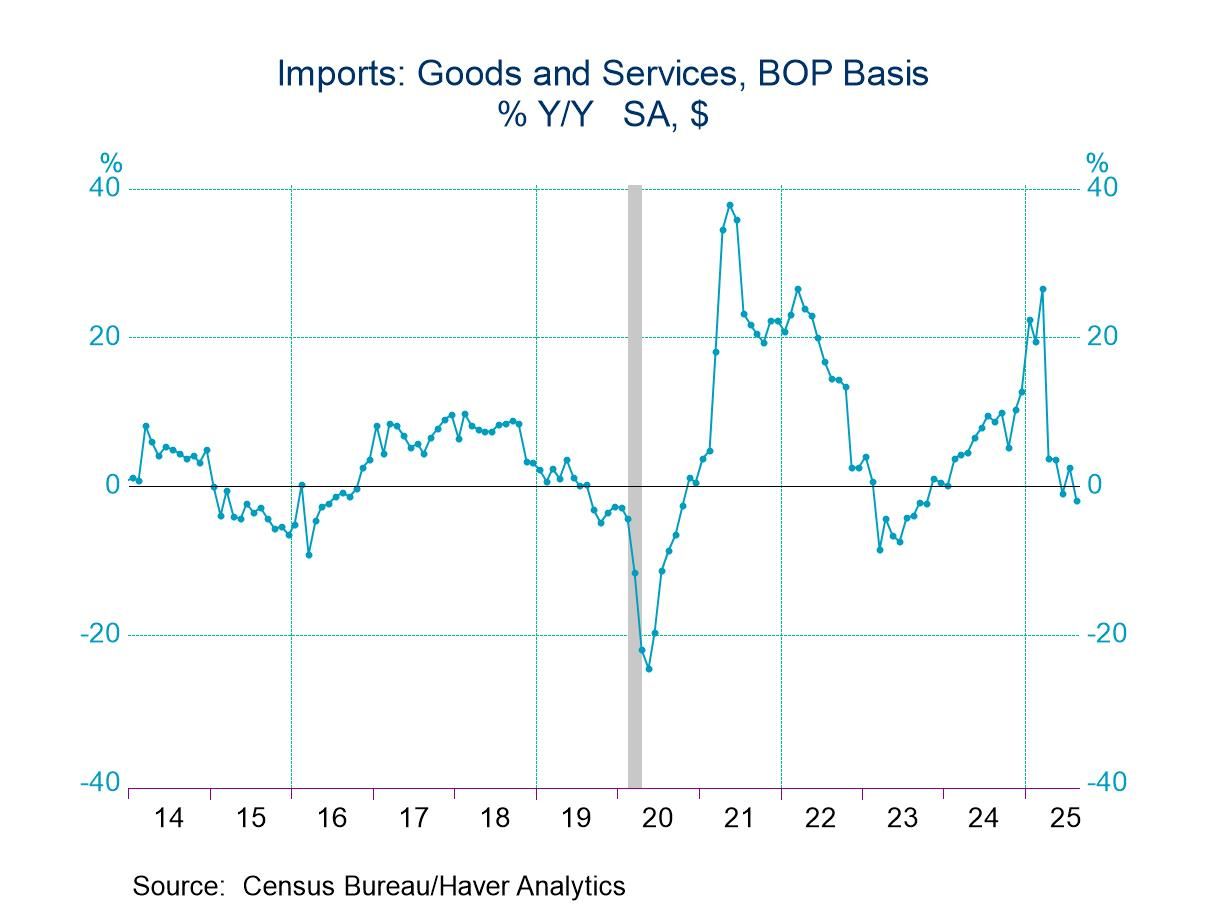
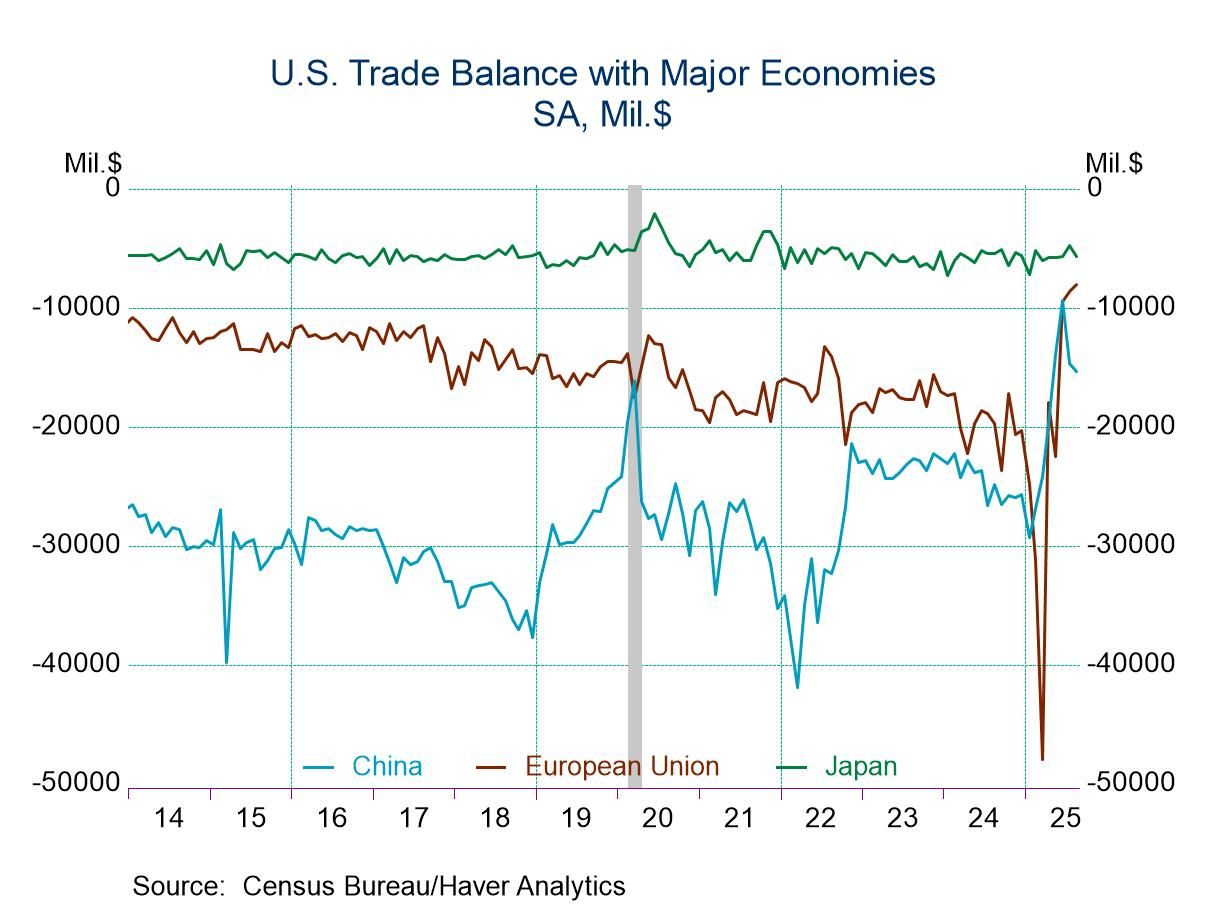
Sandy Batten
AuthorMore in Author Profile »Sandy Batten has more than 30 years of experience analyzing industrial economies and financial markets and a wide range of experience across the financial services sector, government, and academia. Before joining Haver Analytics, Sandy was a Vice President and Senior Economist at Citibank; Senior Credit Market Analyst at CDC Investment Management, Managing Director at Bear Stearns, and Executive Director at JPMorgan. In 2008, Sandy was named the most accurate US forecaster by the National Association for Business Economics. He is a member of the New York Forecasters Club, NABE, and the American Economic Association. Prior to his time in the financial services sector, Sandy was a Research Officer at the Federal Reserve Bank of St. Louis, Senior Staff Economist on the President’s Council of Economic Advisors, Deputy Assistant Secretary for Economic Policy at the US Treasury, and Economist at the International Monetary Fund. Sandy has taught economics at St. Louis University, Denison University, and Muskingun College. He has published numerous peer-reviewed articles in a wide range of academic publications. He has a B.A. in economics from the University of Richmond and a M.A. and Ph.D. in economics from The Ohio State University.





